Famous Black Americans
African Americans have played a vital role in the
history and culture of their country since its founding. An
important part of the curriculum at the Institute for African
American Studies is devoted to creative research on the lives and
work of prominent African Americans and to placing them within
their cultural context. On this page you will find brief
biographical sketches of several key figures in African American
history.

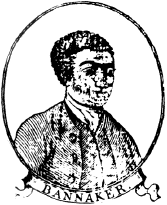
Benjamin Banneker
1731-1806
Although he spent nearly his entire life on one farm, Banneker
had an important influence on how African Americans were viewed
during the Federalist and Jeffersonian periods of American
history. Born in Baltimore County, Maryland, Banneker was the
child of a free black father. He had little formal education, but
he became literate and read widely. At 21, he built a clock with
every part made of wood--it ran for 40 years. After the death of
his father, he lived on his father's 100-acre farm, largely
secluded from the outside world, with his sisters. Self taught in
the fields of astronomy and surveying, he assisted in the survey
of the Federal Territory of 1791 and calculated ephemerides and
made eclipse projections for Benjamin Banneker's Pennsylvania,
Delaware, Maryland and Virginia Almanack and Epheremis,
published during the years 1792-1797. He retired from tobacco
farming to concentrate wholly upon his studies. He corresponded
with Thomas Jefferson and urged Jefferson to work for the
abolition of slavery.
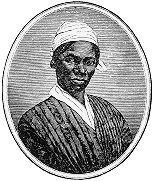 Sojourner Truth Sojourner Truth
1797-1883
Sojourner Truth, a nationally known speaker on human rights for
slaves and women, was born Isabella Baumfree, a slave in Hurley,
New York, and spoke only Dutch during her childhood. Sold and
resold, denied her choice in husband, and treated cruelly by her
masters, Truth ran away in 1826, leaving all but one of her
children behind. After her freedom was bought for $25, she moved
to New York City in 1829 and became a member of the African
Methodist Episcopal Zion Church. In 1853, she helped form a
utopian community called "The Kingdom," at Sing Sing,
New York, which was soon disbanded following the death and
possible murder of its leader. Truth was implicated in the scandal
but courageously fought the falsehoods aimed at her.
After the death of her son, she took the name Sojourner Truth
to signify her new role as traveler telling the truth about
slavery. She set out on June 1, 1843, walking for miles in a
northeasterly direction with 25 cents in her pocket, and rested
only when she found lodging offered by either rich or poor. First
she attended religious meetings, then began to hold meetings
herself that would bring audience members to tears. As she logged
mile after mile, her fame grew and her reputation preceded her.
Truth's popularity was enhanced by her biography written by the
abolitionist Olive Gilbert, with a preface written by William
Lloyd Garrison. In 1864, she was invited to the White House, where
President Abraham Lincoln personally received her. Later she
served as a counselor for the National Freedman's Relief
Association, retiring in 1875 to Battle Creek, Michigan.
Harriet Jacobs
1813-1897
Known primarily for her narrative Incidents in the Life of a
Slave Girl: Written by Herself, Harriet Jacobs was a reformer,
Civil War and Reconstruction relief worker, and antislavery
activist. In Incidents, Jacobs describes her life as
Southern slave, her abuse by her master and involvement with
another white man to escape the first, and the children born of
that liaison. Also described is her 1835 runaway, her seven years
in hiding in a tiny crawlspace in her grandmother's home, and her
subsequent escape north to reunion with her children and freedom.
During the war, Jacobs began a career working among black
refugees. In 1863 she and her daughter moved to Alexandria, where
they supplied emergency relief, organized primary medical care,
and established the Jacobs Free School--black led and black
taught--for the refugees. After the war they sailed to England and
successfully raised money for a home for Savannah's black orphans
and aged. Moving to Washington, D.C., she continued to work among
the destitute freed people and her daughter worked in the newly
established "colored schools" and, later, at Howard
University. In 1896, Harriet Jacobs was present at the organizing
meetings of the National Association of Colored Women.
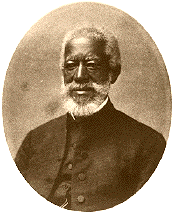 Alexander Crummell Alexander Crummell
1819-1898
Alexander Crummell, clergyman and author, was born in New York
City to free parents. Crummell was a descendant of West African
royalty since his paternal grandfather was a tribal king. He
attended Mulberry Street School in New York, and in 1831 he was
enrolled briefly in a new high school in Canaan, New Hampshire,
before it was destroyed by neighborhood residents. In 1836
Crummell attended Oneida Institute manual labor school. He was
received as a candidate for Holy Orders in 1839 and applied for
admission to the General Theological Seminary of the Episcopal
Church, but was not admitted because of his color. He was
eventually received in the diocese of Massachusetts and ordained
to the diaconate there. After study at Queen's College, Cambridge,
England, he went to Africa as a missionary, becoming a professor
of mental and moral science in Liberia. While there, Crummell
became widely known as a public figure; in 1862 he published a
volume of his addresses, most of which had been delivered in
Africa. After spending 20 years on that continent, Crummell
returned to the United States and became rector of St. Luke's
Church, Washington, D.C., and later founded the American Negro
Academy.
Harriet Tubman
1821-1913
Heralded as the "Moses" of her people, Underground
Railroad conductor Harriet Tubman became a legend during her
lifetime, leading approximately 300 slaves to freedom during a
decade of freedom work. Denied any real childhood or formal
education, Tubman labored in physically demanding jobs as a
woodcutter, a field hand, and in lifting and loading barrels of
flour. Although she had heard of kind masters, she never
experienced one, and she vowed from an early age that she would
strive to emancipate her people. In 1844, at age 24, she married
John Tubman, a freeman, and in the summer of 1849 she decided to
make her escape from slavery. At the last minute, her husband
refused to leave with her, so she set out by herself with only the
North Star to serve as her guide, making her way to freedom in
Pennsylvania. A year later, she returned to Baltimore to rescue
her sister, then began guiding others to freedom. Travel became
more dangerous with the passage of the Fugitive Slave Law, but she
was not deterred, despite rewards offered by slaveowners for her
capture totaling $40,000.
Tubman's heroism was further highlighted by her activities
between 1862 and 1865, when she was sent to the South to serve as
a spy and a scout for the Union Army. Her gift for directions and
knowledge of geography remained an asset as she explored the
countryside in search of Confederate fortifications. Although she
receive official commendation from Union officers, she was never
paid for the services she rendered the government.
After the war she returned to Auburn, New York, working to
establish a home for indigent aged blacks, and in 1869 she married
her second husband, a Union soldier. She became involved in a
number of causes, including the women's suffrage movement. Her
death brought obituaries that demonstrated her fame throughout the
United States and in Europe. She was buried with military rites,
with Booker T. Washington serving as funeral speaker.
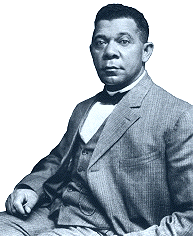 Booker
T. Washington Booker
T. Washington
1856-1915
Born into slavery, Booker T. Washington was the most prominent
spokesperson for African Americans after the death of Frederick
Douglass. Much more conciliatory than Douglass, Washington
sought--but never demanded--social betterment for African
Americans through economic progress. As a boy, he picked
Washington as his last name. After emancipation his mother and
stepfather moved to West Virginia, where Washington worked in the
coal mines but attended school whenever possible. In 1871,
Washington returned to Virginia and enrolled in the Hampton
Institute. After graduation in 1875, he first taught in West
Virginia and then studied at the Wayland Seminary before returning
to teach at Hampton. In 1881 he left Hampton to begin the single
most important undertaking of his life: founding the Tuskegee
Normal School in Alabama. Washington, his small staff, and their
students worked as carpenters to build Tuskegee. In its first year
of operation Tuskegee had 37 students and a faculty of three; when
Washington died in 1915, Tuskegee had 1,500 students, a faculty of
180, and an endowment of $2,000,000.
African Americans have criticized Washington for what they saw
as his overly-deferential attitude to his white benefactors and
for his position that university education was basically
irrelevant for blacks, who should concentrate on vocational
training. This, along with his acceptance of segregation,
increasingly led W.E.B. Du Bois and other leaders to speak out
against Washington. In October 1915 Washington collapsed while
delivering a speech in New York City and was hospitalized. He
asked to be returned home to die and was taken back to Tuskegee,
where he died the next day at home on his beloved campus.
George Washington Carver
1860-1943
One of the best known agricultural scientists of his
generation, Carver was born into slavery near Diamond Grove,
Missouri. Slave raiders kidnapped Carver and his mother when he
was a six-week old infant, but his owner allegedly ransomed back
the boy with a $300 prize race horse. Although Carver had to work
and live on his own while still a boy, he managed to finish high
school and became the first African American student to enroll at
Simpson College in Indianola, Iowa. He then put himself through
the Iowa Agricultural College by working as a janitor, earning a
B.S. in 1894 and an M.S. in 1896 in agricultural science. The same
year, Carver joined Booker T. Washington at the Tuskegee
Institute, directing Tuskegee's agricultural research department
continuously until his death in 1943. At Tuskegee, Carver
concentrated on persuading Southern farmers to end their virtually
exclusive reliance on the cotton farming that had leached the soil
of nutrients, producing increasingly poor crops. Carver encouraged
farmers to diversify and plant sweet potatoes and peas. In order
to make these crops more profitable, Carver did extensive
research, producing more than 300 derivative products from the
peanut and 118 from the sweet potato. In 1923 Carver won the
Spingarn award, the highest annual prize given by the National
Association for Colored People. In 1938 he took $30,000--virtually
his entire life's savings--and founded the George Washington
Carver Foundation to continue his work after his death. When he
died in 1943 the rest of his estate went to the foundation. He was
buried beside his great friend and mentor, Booker T. Washington,
on the Tuskegee campus.
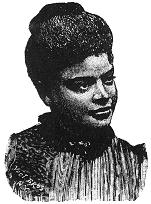 Ida Wells-Barnett Ida Wells-Barnett
1862-1931
Born to a slave cook and a slave carpenter, Ida Wells was a
prominent antilynching leader, suffragist, journalist, and
speaker. At age 16 she took over the raising of her siblings after
the death of her parents to smallpox. With the help of the black
community, Wells attended Rust College, afterward finding
employment as a teacher.
In May 1884 Wells sued and won a case against a railroad for
forcefully removing her from a segregated ladies' coach. The
incident served as a catalyst to a more militant Wells. As part
owner and editor of the Memphis Free Speech and Headlight,
she spent much of her time writing about the poor conditions for
black children in local schools. After the 1892 lynching of three
of her friends, she was diligent in her antilynching crusade,
writing Southern Horrors: Lynch Law in All Its Phases. In
1893 Wells carried her fight for equality to the Chicago World's
Fair, then remained in Chicago and helped spawn the growth of
numerous black female and reform organizations. Wells marched in
the 1913 suffrage parade in Washington, D.C., and was one of two
African American women to sign the call for the formation of the
NAACP. She married Ferdinand Barnett, owner of the Chicago
Conservator, in 1895, and continued her "crusade for
justice" until her death in 1931. View
the text of Well's 1902 letter to the members of the
Anti-Lynching Bureau.
 W.E.B.
Du Bois W.E.B.
Du Bois
1868-1963
Born in Great Barrington, Massachusetts, W.E.B. Du Bois became
the most respected and effective spokesperson for the full rights
of African Americans in the decades before World War II. In 1888
Du Bois earned an A.B. at Fiske University, where he had his first
experience of overt racial prejudice. Returning to Massachusetts,
he earned his M.A. at Harvard and then spent two years studying at
the University of Berlin before becoming the first African
American to earn a Ph.D. from Harvard. Du Bois taught at
Wilberforce University, the University of Pennsylvania, and
Atlanta University. Throughout his life Du Bois combined an
illustrious academic career with his work for full rights for
African Americans. He is perhaps best known for his work in
founding the National Association for the Advancement of Colored
People in 1909 and helping it to become the country's single most
influential organization for African Americans.
Du Bois argued for the creation of a black elite which would
win social equality for African Americans by winning the respect
of powerful educated whites. Frustrated by the slow progress in
civil rights at home, he increasingly looked abroad, espousing the
cause of Pan-Africanism, for which he won the NAACP's highest
honor, the Spingarn award, in 1920. But in 1934 he resigned from
the NAACP to protest their goal of accommodation with white
society. Increasingly disillusioned with life in the United
States, he visited Europe and the Soviet Union, where he was
awarded the Lenin Peace Prize in 1959. In 1961 he announced that
he had joined the Communist Party and emigrated to Accra, Ghana,
at age 93. He died there two years later.
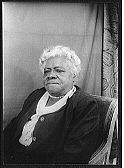 Mary McLeoad Bethune Mary McLeoad Bethune
1875-1955
One of the most widely known African American women of the
twentieth century, Mary McLeod Bethune was an educator, political
advisor, and civil rights leader. After graduation from the Scotia
Seminary in 1895, she taught at the Haines Institute in Augusta,
Georgia, then at Kendall Institute in Sumter, South Carolina,
where she met and later married Albertus Bethune. In October 1904,
Bethune founded the Daytona Normal and Industrial Institute for
Negro Girls in a small rented cabin, and continued to develop the
school over the next two decades. When white hospitals denied
service to black patients and training for black residents and
nurses, Bethune founded McLeod Hospital to serve the community and
to provide training for black physicians and nurses. By 1922, the
school had over 300 students and a staff of 25, later becoming the
Bethune-Cookman College. As well as working for education, Bethune
founded the Circle of Negro War Relief in New York City during
World War I, was vice president of the Commission on Interracial
Cooperation, and served as president for two terms in the National
Association of Colored Women, advising the Coolidge and Hoover
administrations on African American issues. In 1935, Bethune
founded the National Council of Negro Women and served as
president until 1949. She retired from public life on her
seventy-fifth birthday in 1950, settling in her home on the campus
of Bethune-Cookman College, and over the next five years received
12 honorary degrees.
Jessie Fauset
1882-1961
Jessie Fauset, essayist, editor, and novelist, displayed in her
work the complexities of life for literary artists during the
Harlem Renaissance and the Great Depression. Her career as a
teacher provided the stability of income and permanence that
allowed her to write her novels and essays.
As a college student at Cornell University, Fauset had started
corresponding with W.E.B. Du Bois, editor of the NAACP's journal The
Crisis, and later submitted articles to the journal. After
completing her master's degree in French in 1920, she was invited
to become The Crisis's literary editor, holding the job
until 1923 and afterward becoming the managing editor. As both a
foster mother to and a product of the Harlem Renaissance, Fauset
wrote more novels than any other black writer from 1924 to 1933.
The black characters in her novels reflect the "Talented
Tenth" and her own experiences with the hard-working,
self-respecting black middle class. Fauset left The Crisis
in 1927 to achieve a more ordered life as a French teacher at De
Witt Clinton High School. She continued to teach in New York until
1944 and later taught as a visiting professor in the English
Department at Hampton Institute.
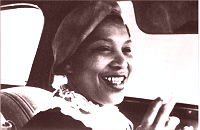 Zora
Neale Hurston Zora
Neale Hurston
1891-1960
Born in the small all-black town of Eatonville, Florida, Zora
Neale Hurston was to become, for 30 years, the most prolific
African American female author in the United States. Despite this,
Hurston and her work drifted into obscurity until her rediscovery
in the 1970s. Much of this neglect can be attributed to the
controversy that always seemed to surround this independent and
free-spirited woman.
Protected from racial prejudice as a child and inspired by her
mother, Hurston grew into an outspoken, eccentric, and racially
proud woman, one who chose to write about the positive side of
black Americans. After moving to Washington, D.C., she attended
Howard University and first published her writing in 1921. Hurston
moved to New York City in 1925 and became one of the members of
the Harlem Renaissance. After attending Barnard College on a
scholarship and completing her undergraduate work in 1927, she
returned to Florida to collect black folklore and was awarded a
Julius Rosenward Fellowship in 1934 for her collection of
folklore. During the 1930s, her novels Jonah's Gourd Vine
and Their Eyes Were Watching God were published. Her career
produced seven books and more than fifty shorter works from
autobiography to folklore to music and mythology. After World War
II, her fortunes declined until her death in 1960, a penniless
inmate at the Saint Lucie County Welfare Home. Although she was
believed married three times, she died alone, and her grave
remained unmarked until novelist Alice Walker located it in an
overgrown Florida cemetery.
E. Franklin Frazier
1894-1962
Sociologist and educator, E. Franklin Frazier was born in
Baltimore, Maryland. In 1916 he graduated cum laude from Howard
University with a B.A. degree and accepted a position as
mathematics instructor at Tuskegee Institute. He received his M.A.
degree from Clark University in 1920 and his Ph.D. from the
University of Chicago in 1931. A grant from the American
Scandinavian Foundation enabled him to go to Denmark to study
"folk" schools. From 1922 to 1924, Frazier taught
sociology and African studies at Morehouse College in Atlanta,
then served as director of the Atlanta School of Social Work until
1927. He was on the faculty at Fisk University from 1931 until
1934, after which he became head of Howard University's department
of sociology, a post he held until named professor emeritus in
1959. Frazier was a prolific writer; he was the author of several
books including the controversial Black Bourgeoise. His
numerous awards included a 1940 Guggenheim Fellowship and the John
Anisfield Award.
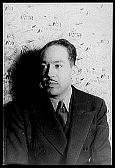 James Langston Hughes James Langston Hughes
1902-1967
One of the original writers of the Harlem Renaissance, Langston
Hughes was born in Joplin, Missouri. In 1921 he began studies at
Columbia University but left after a year, going off to work on a
freighter and traveling that way to Africa, then living in Paris
and Rome. Returning to the U.S., he graduated from Lincoln
University in 1926, publishing his first book of poetry, The
Weary Blues, that same year. Also in 1926, Hughes published a
critical essay, "The Negro Artist and the Racial
Mountain," which became a defining piece for the Harlem
Renaissance movement. During the next four decades he continued to
write in a number of forms--novels, poetry, short stories, plays,
autobiography, and nonfiction. In 1942 he began a column in a
Chicago newspaper that introduced his character,
"Simple," an African American Everyman who wittily
comments on the ironies besetting black people's lives. He
eventually published five volumes of his "Simple
Stories." Amazingly prolific, admirably versatile, and a man
capable of hearty humor as well as bitter criticism, he fell in
and out of favor with the public, but the best of his work
promises to survive.
Charles Drew
1904-1950
The man who discovered the modern processes for preserving
blood for transfusions, Charles Drew grew up in a solid but poor
family in a Washington, D.C. ghetto. His intelligence and athletic
skill won him a scholarship to Amherst College, where he was
captain of the track team, starting halfback on the football team,
and an honors student. For two years following graduation, Drew
taught and coached at Morgan College in Baltimore, earning money
to attend the medical school at McGill University in Montreal.
There he became increasingly interested in the general field of
medical research and in the specific problems of blood
transfusion. After graduation from McGill in 1932, Drew did his
three-year residency at Montreal General Hospital before joining
the faculty of Howard University, where he was eventually
appointed head of surgery.
During the last decade of his life, Drew continued his
pioneering research into the separation and preservation of blood.
When the U.S. entered World War II, he was appointed head of the
National Blood Bank program. Furious at the official government
policy that mandated whites' and African Americans' blood would be
given only to members of their respective races, he resigned from
his post and returned to Howard. In 1944 he became chief of
surgery at Freedmen's Hospital in Washington, D.C., where his
presence encouraged other young African Americans to enter the
field of medicine. Drew died in a car crash in 1950.
Margaret Walker
Born 1915
Poet, novelist, and teacher Margaret Walker spent a culturally
rich southern childhood that influenced her poetic and artistic
vision. Her father, a scholar and lover of literature, instilled
in his daughter a love of American and English classics, the
Bible, and poetry. Her mother played music, especially ragtime,
and read poetry. The family household included her maternal
grandmother, who told the children folktales. One story stayed in
Walker's consciousness and became a part of her famous novel, Jubilee.
The Depression served as the context for the 1934 publication
of her first poem, and the beginning of her association with the
WPA Writer's Project, where her experience was enriched by her
contact with other writers and artists. In 1939, Walker finished
her first novel, Goose Island, which was never published. A
collection of poetry was published by Yale University Press in
1941, also winning the Yale Younger Poet's Award. The same year,
Walker began teaching, and her long career took her to Livingstone
College, West Virginia State College, and Jackson State
University. Since her retirement from teaching, Walker has
continued to write and has undertaken rigorous speaking tours.
Malcolm X
1925-1965
One of the most controversial figures in the civil rights
movement, Malcolm X's career was cut short by an assassin. Born
Malcolm Little, his minister father died when he was 6. After a
childhood spent in institutions and foster homes, Malcolm headed
east, settling in Boston and supporting himself with odd jobs and
pimping. In 1943 he moved to New York where he began to lead an
increasingly marginal life. After receiving a 10-year sentence for
burglary in 1946, he was transformed in prison, becoming a
follower of Elijah Muhammad's Nation of Islam movement. Paroled in
1952, he was ordained as a minister, taking the name Malcolm X.
His militant stance and depiction of whites as "blue-eyed
devils" won him considerable press coverage and a good deal
of suspicion from the white community; in many ways he seemed the
antithesis of Martin Luthor King, Jr., who preached non-violence.
In 1963 he formed the Organization of Afro-American Unity, and in
1964 he made a pilgrimage to Mecca and converted to orthodox
Islam.
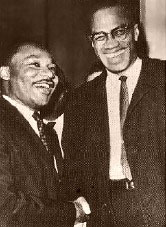 At
the time of his death, Malcolm X seemed to be moderating his
hostile view of whites. Nonetheless, he spoke in the months before
his death of his fear that he might be assassinated by opponents
in the Nation of Islam or by the U.S. government. His assassin was
apparantly a member of a dissident black group, though mystery
still remains about the event. At
the time of his death, Malcolm X seemed to be moderating his
hostile view of whites. Nonetheless, he spoke in the months before
his death of his fear that he might be assassinated by opponents
in the Nation of Islam or by the U.S. government. His assassin was
apparantly a member of a dissident black group, though mystery
still remains about the event.
Download a sound file from an early Malcolm X speech.
Running time :10
128K .aiff format
Martin Luther King, Jr.
1929-1968
The most influential leader in modern civil rights, Martin
Luther King, Jr. was born in Atlanta, Georgia. His father was a
Baptist minister, providing a strong religious tradition for King.
He attended the Atlanta public schools and was graduated with his
A.B. from Morehouse College in 1948 when he was 19 years old. He
went on to Crozer Theological Seminary and graduated in 1951 at
the top of his class, going from there to Boston University for
his Ph.D. There he met and married Coretta Scott in 1953. By then
an ordained minister, King took the pastorate of the Dexter Avenue
Baptist Church in Montgomery, Alabama, and quickly became involved
in the civil rights movement. He soon found himself in the
forefront of a boycott of Montgomery's segregated buses, which led
to a Supreme Court decision in 1956 against Alabama's segregation
laws. Following this triumph King was made president of the newly
formed Southern Christian Leadership Conference, committing his
life to nonviolent activism and bringing the civil rights movement
to the forefront of American public life.
Between 1960 and 1965, King continued to lead numerous
demonstrations and protests on behalf of civil rights, leading the
1963 March on Washington where he delivered his most quoted
speech, "I have a dream. . . ." In 1964 he was awarded
the Nobel Peace Prize. Martin Luther King, Jr. was shot and killed
on April 3, 1968 in Memphis, Tennessee; he was there to support
striking sanitation workers. His death devastated the nation.
Download a sound file from King's "I Have a
Dream" speech. Running time 1:03
689K .aiff
format
Lorraine Hansberry
1930-1965
Lorraine Hansberry's life as celebrated playwright and activist
artist earned her the tile of "Warrior Intellectual."
When she died at age 34, her testimonial was demonstrated by the
number of eulogies given by prominent figures in government, the
arts, and the civil rights movement.
Born into an affluent family in Chicago, Hansberry grew up
among such family friends as Paul Robeson, Duke Ellington, and
Jesse Owens. Her interest in theater was sparked during her years
at the University of Wisconsin, but in 1950 she left college for
New York and "an education of a different sort." She
worked as a writer for Freedom, Paul Robeson's radical
black newspaper, and covered such issues as colonial freedom,
equal rights for blacks, the conditions of Harlem schools, and
variants of racial discrimination. She married Robert Nemiroff, a
white student whom she met on a picket line at New York
University, where he was a student.
Lorraine Hansberry left Freedom in 1953 to concentrate on her
play writing. earning her position in American letters with the
production of A Raisin in the Sun in 1959, becoming the
first black woman to have a play on Broadway and the first African
American to win the New York Drama Critics Circle Award. Her
success revitalized black theater, enabling other blacks to get
their plays produced. Politically active throughout her short
life, Hansberry worked to abolish the House Un-American Activities
Committee, served on a panel to meet with Attorney General Robert
Kennedy about the racial crisis, and was instrumental in civil
rights.
Colin Powell
Born 1937
Born and raised in New York City, Colin Powell would go on to
become one of the country's best known figures during Operation
Desert Storm, the U.S.-led United Nations offensive against Saddam
Hussein's Iraq in 1990-1991. Upon graduation from City University
of New York in 1958, Powell received a second lieutenant's
commission and became a career army officer, serving with
distinction in Vietnam. Rising through the ranks and increasingly
responsible commands, from 1987 to 1989 he was a presidential
assistant for national security in the Reagan administration. As
such, he was the highest ranking African American in the
administration. In 1988 he was nominated to become one of only ten
four-star army generals. His responsibilities included the command
of all army personnel serving in the mainland United States and
the defense of the mainland in the event of enemy attack. During
the Reagan years he advised the president at summit conferences in
both Moscow and Washington, D.C. In 1989 he became the first
African American to serve as chairman of the Joint Chiefs of
Staff, a position he held until he retired from the army in 1993.
Upon retirement he was awarded the Presidential Medal of Freedom.
Charlayne Hunter-Gault
Born 1942
Charlayne Hunter-Gault and Hamilton Holmes were the first two
black American Students to attend the University of Georgia in
January 1961. Students rioted to protest. Hunter-Gault says of the
experience, "If you've ever been in the middle of a riot or
the eye of a hurricane, you know it's very calm. That is exactly
how I felt the night of the riot." Hunter-Gault knew at the
age of twelve that she wanted to be a journalist, and despite the
oppressive racial climate she encountered at the University of
Georgia, she stayed and earned her B.A. in journalism in 1963.
After graduating from college, Hunter-Gault went to work for
the New Yorker magazine, and in 1967 she received a Russell
Sage Fellowship to study social science at Washington University.
Later she went to Washington, D.C., to cover the Poor People's
Campaign, and in 1968 she accepted a position with the New York
Times. Over the years Hunter-Gault has received numerous
awards, including the New York Times Publishers Award, two
National News and Documentary Emmys, and the George Foster Peabody
Award, given to her by the University of Georgia for the
documentary "Apartheid's People." Presently she is a
journalist on PBS television.
August Wilson
Born 1945
Despite never finishing high school, August Wilson holds the
distinction of having twice won the Pulitzer Prize, for plays
depicting the African American experience: Fences and The
Piano Lesson. Wilson set out to create a cycle of plays on the
African American experience, concentrating on the twentieth
century. His first play, Ma Rainey's Black Bottom, set in
the 1920s, won the New York Drama Critics Circle Award, and his
Joe Turner's Come and Gone, set in 1911 and focusing on black
migration to the North, was voted the best new play in 1988 by the
New York Drama Critics Circle. While many of his plays have opened
in New Haven, Connecticut, all have moved on to long New York runs
and to countless productions elsewhere. Wilson is also founder of
the Black Horizons Theater Company.
Carole Moseley-Braun
Born 1947
In 1992 Moseley-Braun was elected a Senator (D.) from Illinois,
becoming the first African American woman to sit in the U.S.
Senate and only the second African American since Reconstruction
to be a Senator. The daughter of a Chicago police officer,
Moseley-Braun received a law degree from the University of Chicago
and worked in the U.S. Attorney's Office, where she won the
Special Achievement Award. In 1978 she was elected to the Illinois
House of Representatives, where she was voted Best Legislator each
of the ten years she served. In 1988 she became the first African
American to hold high office in Cook County when she was elected
Cook County Recorder of Deeds, an important stepping stone to her
Senate race.
Cynthia A. McKinney
Born 1955
One of the strongest voices for modern black
interests in the Georgia's state legislature has long been J. E.
"Billy" McKinney, a civil rights activist who first
served in 1973. Fifteen years later his daughter, Cynthia, a
political scientist who had taught at Clark Atlanta University and
Agnes Scott College, a century-old woman's college in DeKalb
County, also won a seat in the state House. Together they became
the only father-daughter legislative team in the country. Cynthia
McKinney brought to her post the same commitment to defending
minority interests her father had; she was just 10 when the Voting
Rights Act was passed and she has recalled that, as a child, she
often rode on her father's shoulders as he walked in civil rights
marches. She won a seat on the Georgia legislature's redistricting
committee and helped to craft the two new black-majority
districts. In 1992 McKinney ran as a Democrat for the right to
represent one of the districts she had helped create, the
Eleventh. She won with 73% of the vote and was later reelected to
a second term.

Selected Bibliography:
Barone, Michael & Ujifusa,
Grant. The Almanac of American Politics 1996. Washington,
DC: National Journal Inc., 1995.
Low, W. Augustus. Encyclopedia
of Black America. New York: McGraw-Hill, 1981.
Salem, Dorothy C. African-American
Women: A Biographical Dictionary. New York & London:
Garland Publishing, 1993.
Smith, Jessie Carney, ed. Notable
Black American Women. Detroit, MI: Gale Research Inc., 1992.
Smith, Sande, ed. Who's Who in
African-American History. Greenwich, CT: Brompton Books Corp.,
1994.
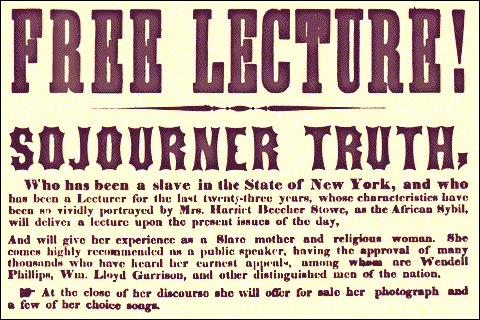
|